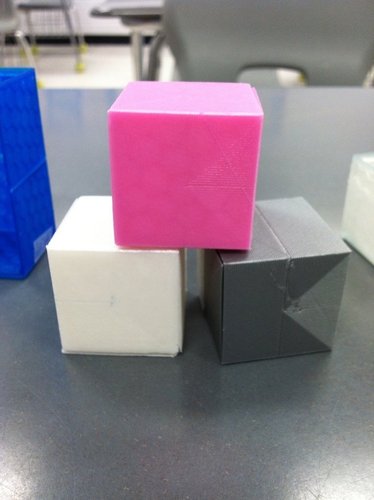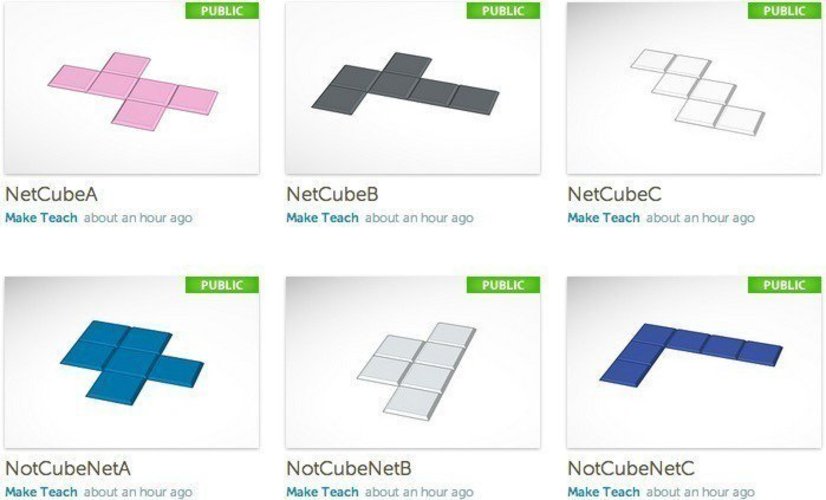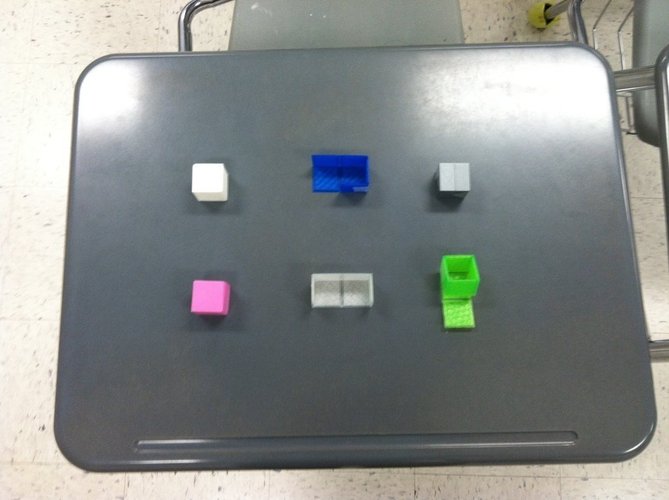





Prints (0)
-
No Prints Yet
Be the first to upload a Print for this Design!
Description
Which of the following nets could be folded to form a cube? The question above challenges students to mentally convert a 2D outline into a 3D object. While a majority of students are able to intuitively answer this question, many students struggle especially in a high-stakes standardized testing environment. The Nets of a Cube - Geometry Manipulative Set allows students to explore the connection between a 2D outline and a real 3D objects. Students fold/unfold the manipulative between a flat object and a cube. Like an optical illusion, once the students makes the connection, they are able to 'see' the relationship. This math manipulative was designed based on the need of a high school geometry teacher to provide a tactile learning experience for exploring 3D figures., The set contains 6 nets, 3 of the nets form a cube and 3 of the nets do NOT form a cube. The set allows teachers to create physical problems sets in a variety of formats that emulate standardized test questions.
Which of the following nets could be folded to form a cube? (4 answer multiple choice - 1 correct answer) Which of the following nets can NOT be folded to form a cube? (4 answer multiple choice - 1 correct answer) Which of the following nets could be folded to form a cube? Select all the correct answers? (6 answer multiple choice - 3 correct answers)
These foldable cubes can be used for a variety of lesson objectives including math vocabulary, properties of a platonic solid, measurement, calculation of area and volume and percent error calculations. A pdf of lesson ideas for the foldable nets of a cube is included in the downloads.
Printability: Designed for a 0.2 mm layer height. Has been printed successfully by designer in PLA/ABS on multiple machines.
Educational Value: Design is based directly on stated needs of geometry and elementary math teachers. Manipulative has seen classroom use with students and balances content area appropriateness with fun. Is easier for students to manipulate than paper based alternatives.
Creativity: The print flat design explores the flexibility of the print material to create a moving hinges that is foldable and appeals to students. The designs were created in Tinkercad and show how very basic shapes can create more complex structures. Visit my blog at http://www.designmaketeach.com for more 3D printing lesson ideas. If you have any comments or suggestions, please feel free to leave them in the comments or contact me on Twitter @designmaketeach
Nets of a Cube are printed flat and then folded into shape. Only 3 of the designs can be folded into cubes (Netcubea.stl, netcubeb.stl and netcubec.stl). Can be printed with or without infill. Examples were printed with PLA. Designed for a 0.2 mm Layer height.
Note: The print must be oriented (rotated) on the build platform so the infill lines are as perpendicular as possible to the folds. If the infill lines are parallel to the folds the folds will crack. We've had success rotating the print to approximately 30 degrees.
Design requires tape or glue to hold the shape of a cube. Original designs created by DesignMakeTeach.com in Tinkercad.
Comments